Abstract
This study was initiated to characterize Rhizobium isolates obtained from root nodules of ineffectively nodulated, field-grown alfalfa (Medicago sativa L.) plants. The purpose was to determine if these isolates possessed characteristics which would explain either their ineffectiveness in N2 fixation or their apparent ability to tolerate the moderately acid soil conditions from which they originated. Isolates were characterized by analysis of growth rate, 39°C tolerance, acid production on conventional media, and symbiotic performance. All isolates were ineffective in N2 fixation on alfalfa, and they contained one or more anomalous characteristics. These included either slow growth rate, lack of 39°C tolerance, or lack of acid production on conventional media. Infectiveness tests on a broad range of legumes revealed that the isolates formed root nodules on M. sativa, Medicago lupulina L., and Phaseolus vulgaris (L.) Savi. (common bean). These results provide evidence that, in some situations, ineffective nodulation of M. sativa in the field may be due to the presence of promiscuous, native Rhizobium species.
Full text
PDF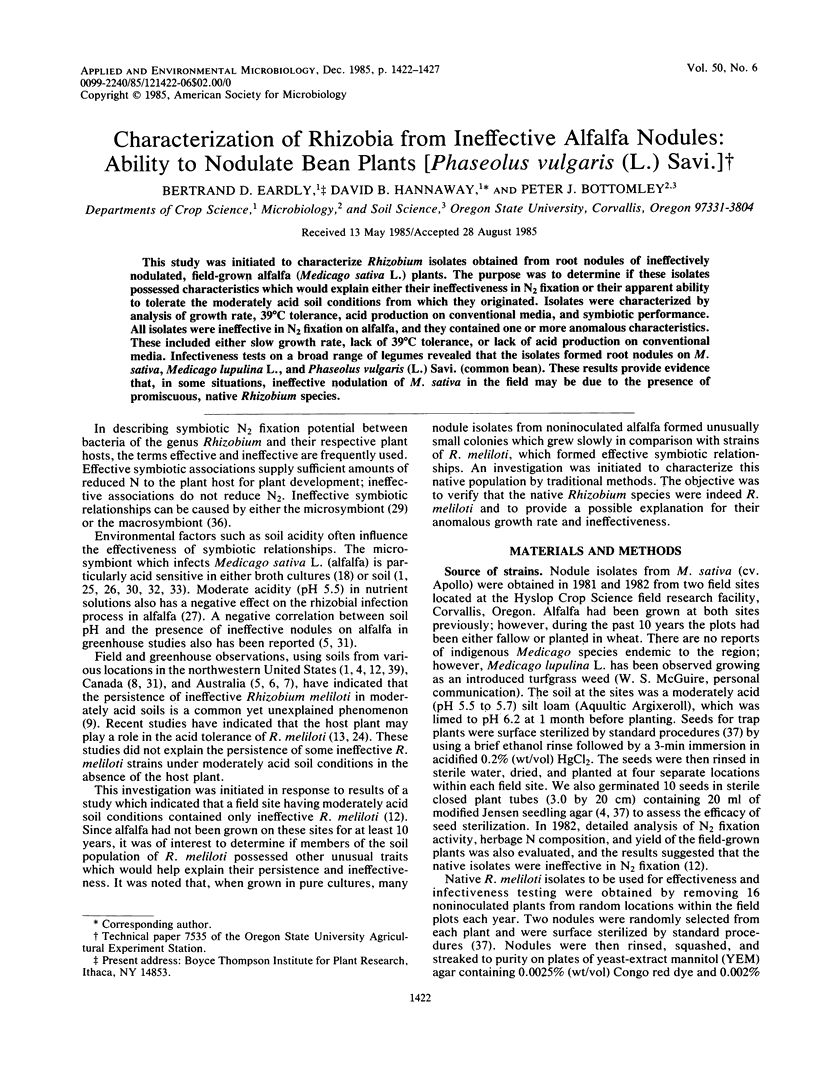
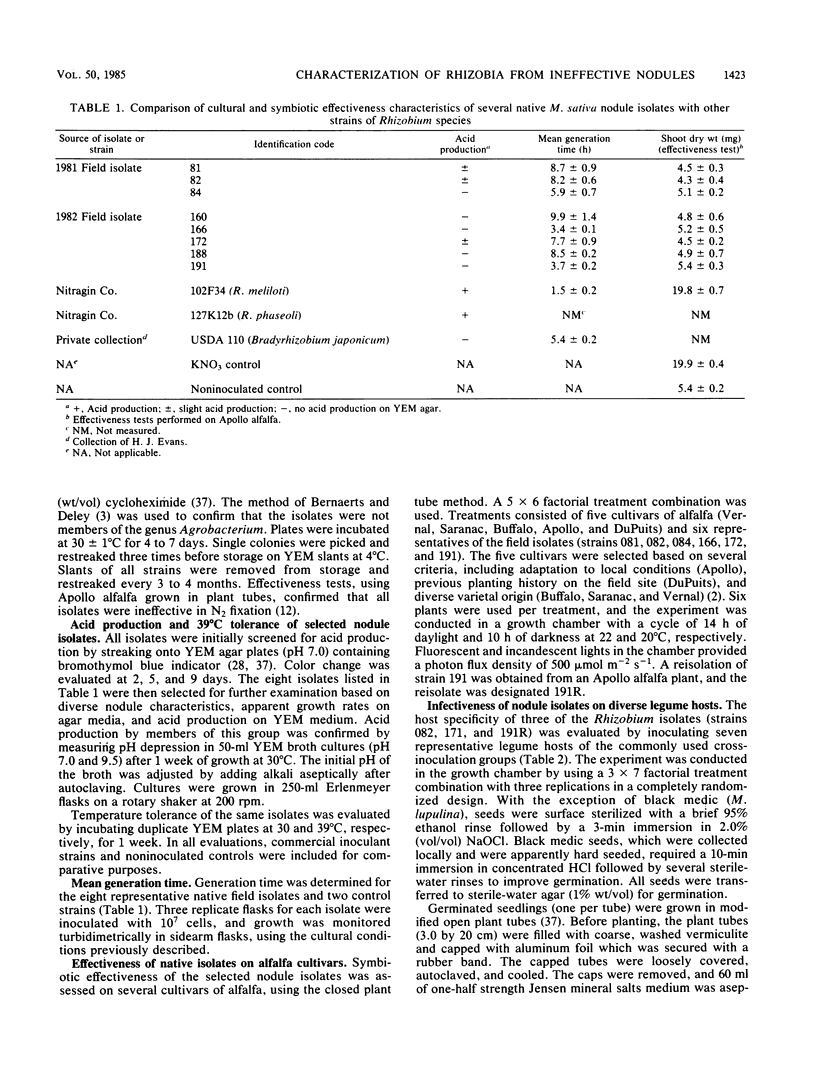
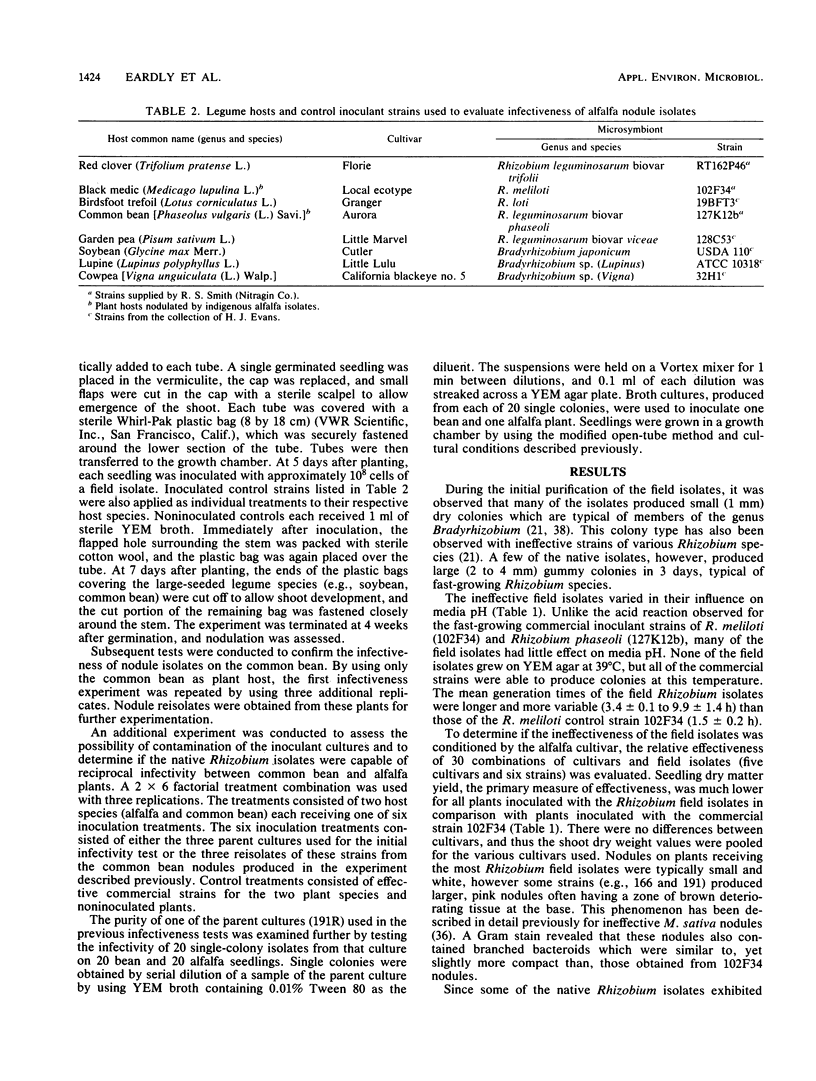
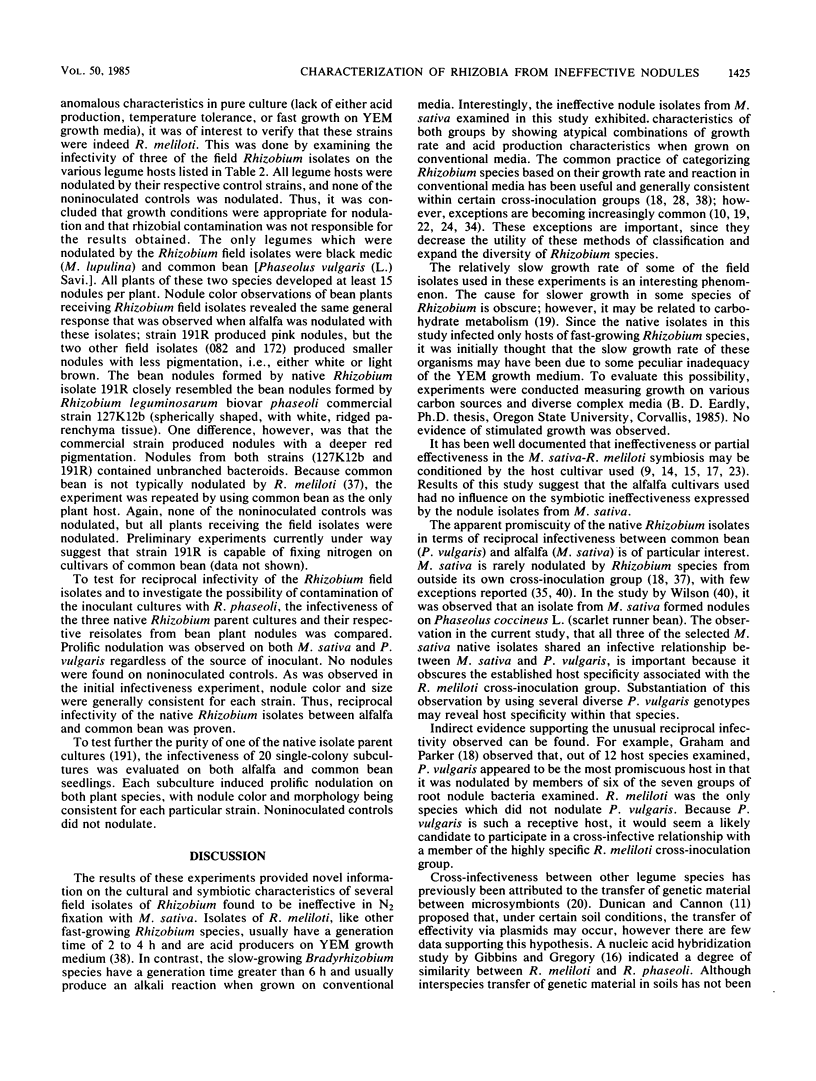
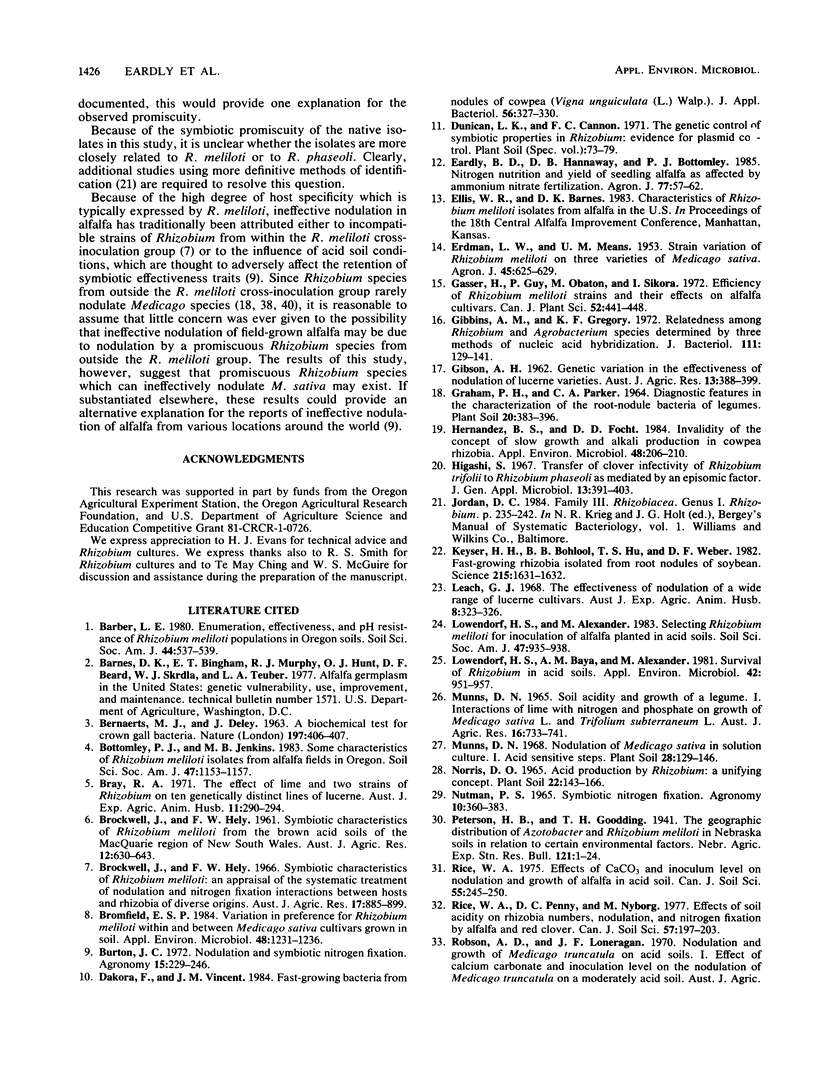

Selected References
These references are in PubMed. This may not be the complete list of references from this article.
- Bromfield E. S. Variation in Preference for Rhizobium meliloti Within and Between Medicago sativa Cultivars Grown in Soil. Appl Environ Microbiol. 1984 Dec;48(6):1231–1236. doi: 10.1128/aem.48.6.1231-1236.1984. [DOI] [PMC free article] [PubMed] [Google Scholar]
- Gibbins A. M., Gregory K. F. Relatedness among Rhizobium and Agrobacterium species determined by three methods of nucleic acid hybridization. J Bacteriol. 1972 Jul;111(1):129–141. doi: 10.1128/jb.111.1.129-141.1972. [DOI] [PMC free article] [PubMed] [Google Scholar]
- Hernandez B. S., Focht D. D. Invalidity of the concept of slow growth and alkali production in cowpea rhizobia. Appl Environ Microbiol. 1984 Jul;48(1):206–210. doi: 10.1128/aem.48.1.206-210.1984. [DOI] [PMC free article] [PubMed] [Google Scholar]
- Keyser H. H., Bohlool B. B., Hu T. S., Weber D. F. Fast-growing rhizobia isolated from root nodules of soybean. Science. 1982 Mar 26;215(4540):1631–1632. doi: 10.1126/science.215.4540.1631. [DOI] [PubMed] [Google Scholar]
- Lowendorf H. S., Baya A. M., Alexander M. Survival of Rhizobium in Acid soils. Appl Environ Microbiol. 1981 Dec;42(6):951–957. doi: 10.1128/aem.42.6.951-957.1981. [DOI] [PMC free article] [PubMed] [Google Scholar]


